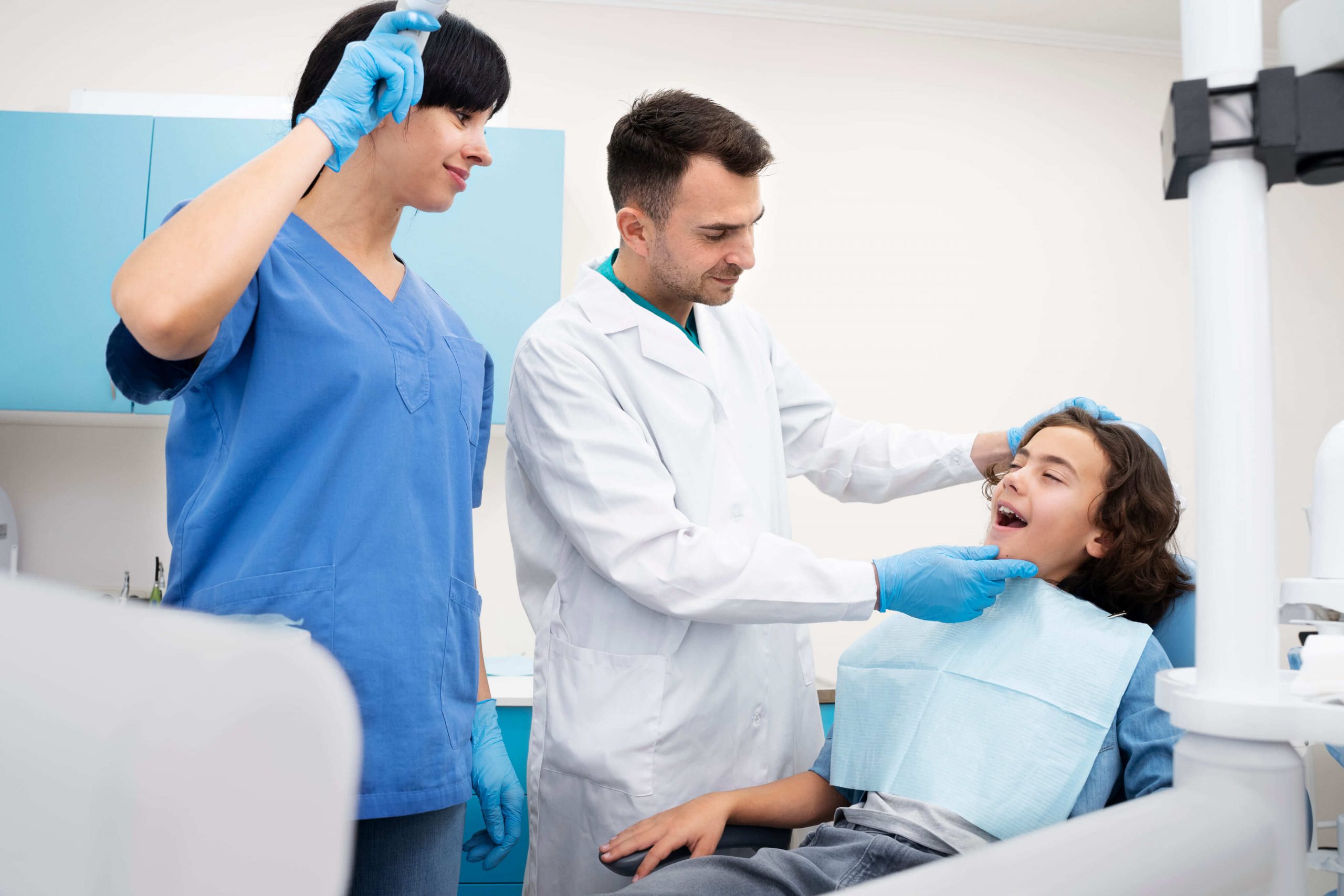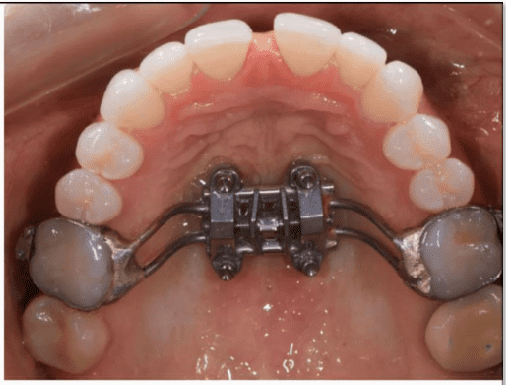What is the MSE Maxillary Skeletal Expander Appliance?
The MSE maxillary expander is an orthodontic titanium palatal expansion mechanism. The device is fixed to either side of the palatal bone with titanium screws. Once secured to the palate, the MSE has a screw that is rapidly expanded to separate the right and left sides of the palate bone. So basically the MSE widens the palate by forcing the right and left sides of the palate bone wide open. Once the palate has been expanded, bone will grow where the palate has been forced apart. The procedure is a way to get the upper jaw to grow wider. The MSE procedure is relatively new. The long-term side effects of MSE are not known. Of particular concern, the impact of forcing the palatal bones wide-open and into other bones in the head.
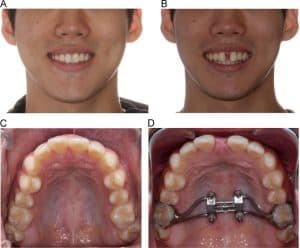
mse maxillary skeletal expander device 300x248 1
MSE Expander VS DNA and Homeoblock Adult Appliances
MSE Problems and Limitations
The MSE is a very effective palatal expander. There are some obvious side effects such as a very wide space that rapidly develops between front teeth. There can be some tipping of the back teeth where the appliance connects to the molars. The MSE has no impact on the lower jaw. The lower jaw usually needs to be widened and moved forward. The MSE also does not cause any forward growth of the upper jaw (very important for airway problems). Suffice to say, the MSE palatal expander device is usually followed by more expensive appliances and braces. The MSE is not going to solve sleep apnea, TMJ or upper airway problems by itself. MSE is usually one part of a comprehensive treatment plan.
How much does a MSE expander Device Cost?
Most orthodontic cases involving MSE usually take 3-5 years and cost between $30,000 – $50,000 between the MSE, other appliances and braces. The MSE expander is usually put in place by an oral surgeon at the direction of another dentist. The MSE alone costs $5000 – $10,000 depending on location. But you cannot stop after finishing the MSE appliance. It is 100% necessary to continue with other orthodontic treatments deemed necessary by the orthodontist. Treatments such as braces, other expanders and possibly more aggressive surgery.
Alternatives to MSE Maxillary Skeletal Expanders
The DNA appliance and Homeoblock device are adult expanders for adults adults. The devices work at teeth level and grow adult jaws without surgery. The DNA and Homeoblock usually do not involve braces, surgery or other orthodontic devices afterwards. The DNA and Homeoblock grow the mouth and jaws three dimensionally. The entire treatment usually takes 12-24 months and costs between $8000 – $12,000. This treatment has some obvious advantages over MSE, but the appliances do not always get as much palatal expansion as MSE. Some people get a some expansion and others get a lot. The nice thing about the DNA and Homeoblock is they both can do palatal expansion, forward growth and move the lower jaw forward. Basically they can grow everything 3 dimensionally and finish your case.
MSE Expander Results Vs Homeoblock and DNA Appliances
The most logical approach is do DNA or Homeoblock therapy and if they do not get enough growth, then a more aggressive treatment such as MSE can be used. The The treatment is technique sensitive and requires a skilled provider. The DNA and Homeoblock have received some criticism for causing gum recession and just tipping teeth. This only happens if the appliance is not worn long enough and it is expanded too quickly. We usually recommend expanding the appliances every 2-3 weeks for adults. And the appliance needs to be worn 10-12 hours per day (usually after dinner and through the night).
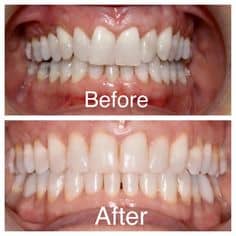
Asymmetries can be introduced during MSE and may even be caused.
Notice how the relationship between the upper and lower jaws is still poor. The upper and lower front teeth are also leaning too far back. No forward growth is achieved during MSE expansion. This will require another expander such as a DNA or Homeoblock appliance. Achieving forward growth is a very important part of correcting an airway problem and mouth breathing. Forward growth moves the tongue resting position forward and away from the throat.
60% of adults have crowded teeth, narrow palates and very small tongue spaces. Adults who have small jaws and facial profile may suffer from TMJ pain, sleep apnea, bad posture and head and neck pain. All of these problems are linked and related which is why you are reading this page. The root cause of these problems is not having enough space in the mouth and nose. Not enough room for the teeth to fit and bite properly. Not enough space for proper breathing. Not enough room for the tongue to fit and function well.
DNA Appliances and Homeoblock can be used with MSE
The orthodontic appliances are more comprehensive treatment appliances. The DNA and Homeoblock can grow jaw bone in all 3 dimensions whereas MSE and SARPE only increase the width of the palate. Cases only start with MSE and SARPE. Other treatment modalities such as braces and forward growth appliances will be necessary. Notice the large space that was opened between the front teeth in the after MSE treatment photo above. MSE only expands the palate, so a forward growth appliance such as the AGGA (Anterior Growth Guidance Appliance) will be necessary. The bite is very important. A problem with expanding the palate is now the upper jaw is wider than the lower jaw. Something will need to be done to correct the difference in size between the upper and lower jaws after MSE therapy. The best course of treatment is to use the non-surgical expander first and if the palate growth is inadequate, the case can be finished with MSE.
What are the Vivos DNA and Homeoblock Appliances?
The Homeoblock and the Vivos DNA appliances are non-surgical facial growth devices. They look like retainers and are worn at night only. The appliances are custom designed per the patient to change the size and shape of the mouth and jaws. The DNA appliance uses light pressure, biting and tongue forces to grow the jaw bone. Depending on how the appliances are designed, they are capable of growing the jaws in all 3 dimensions. There is an upper and lower appliance to control the growth of the upper a lower jaws. The appliances are worn at night and the treatment usually lasts 12-18 months.
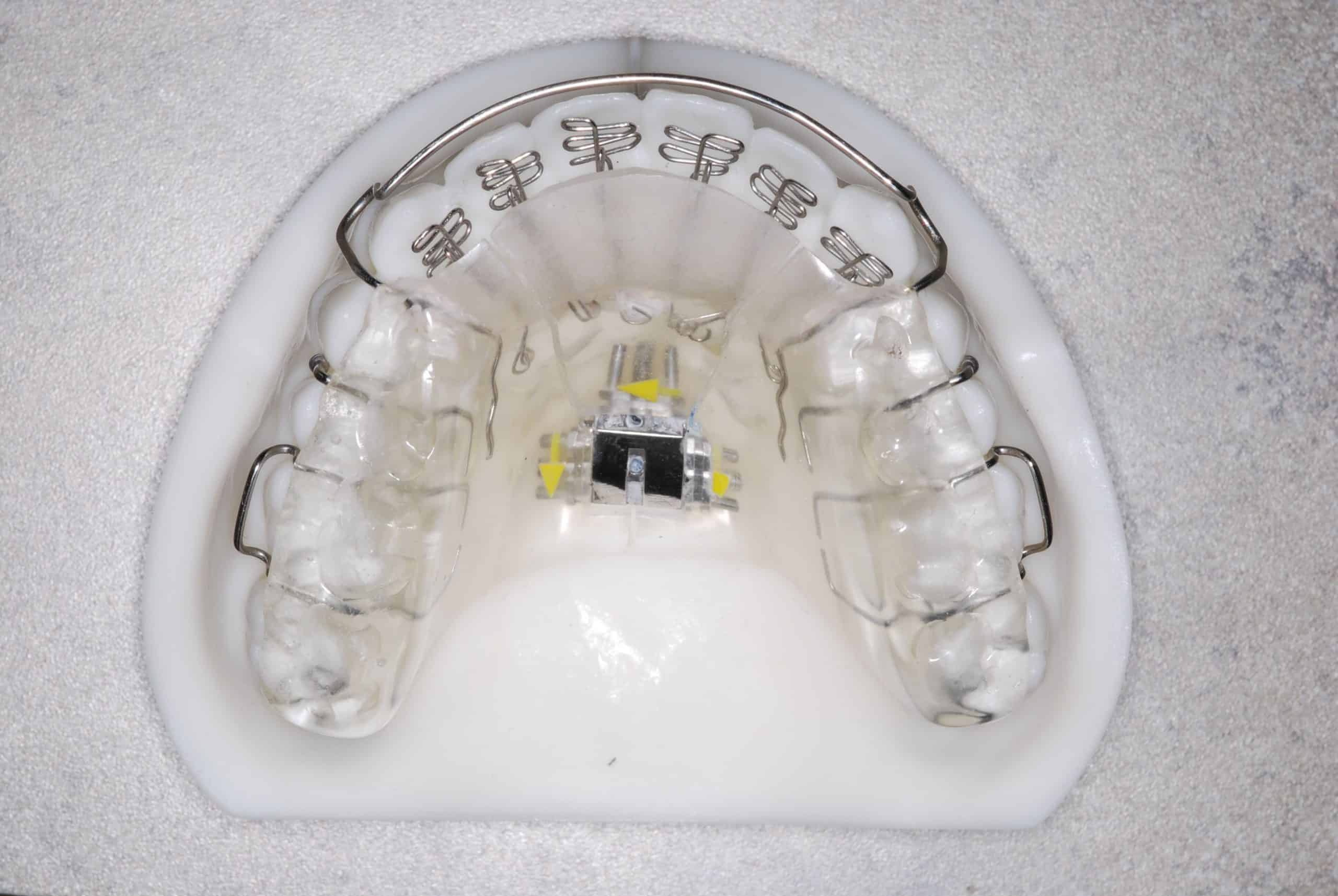
Vivos DNA Device
Schedule Consultation


 (301) 421 1996
(301) 421 1996 burtonsvillesmiles@gmail.com
burtonsvillesmiles@gmail.com